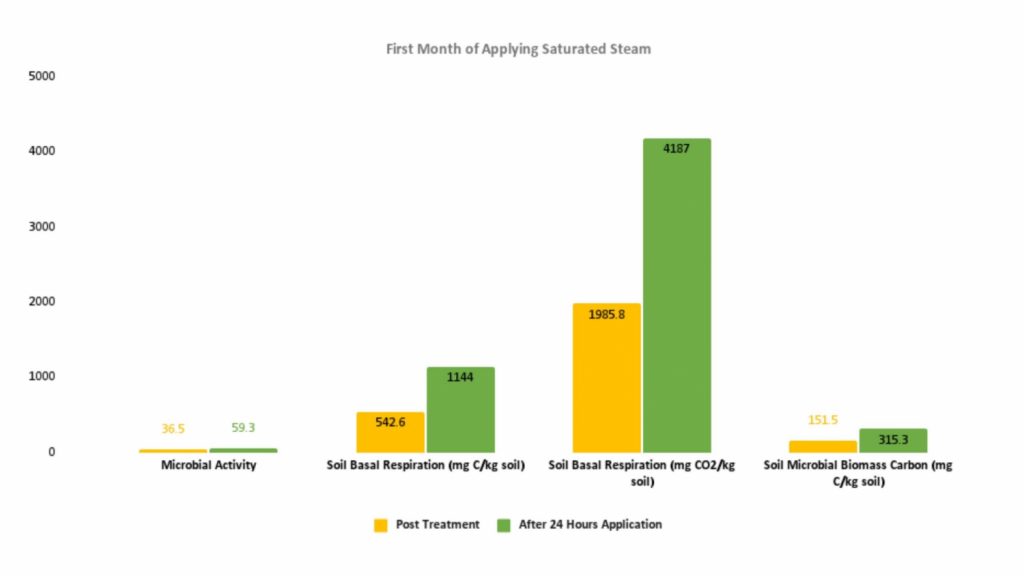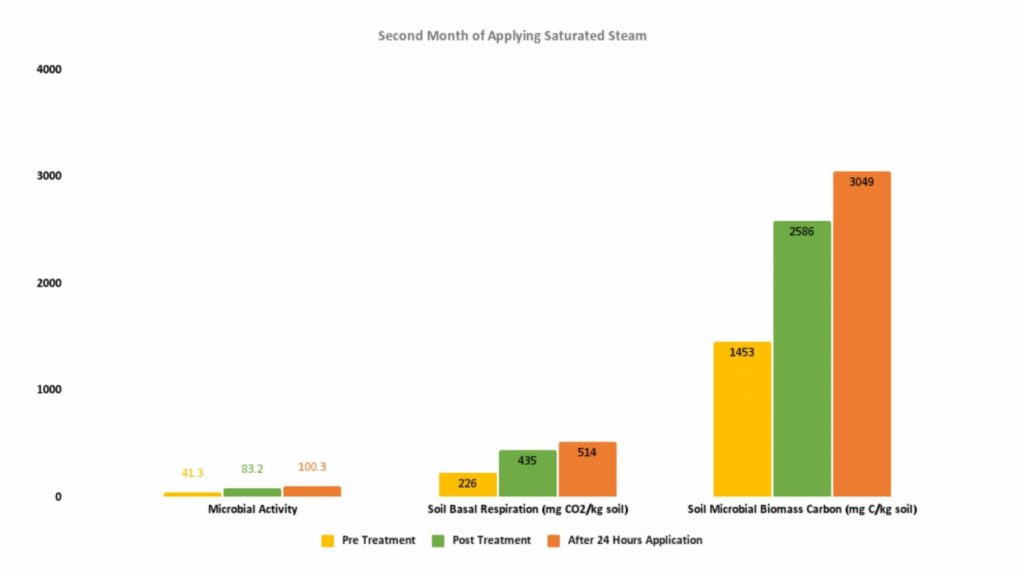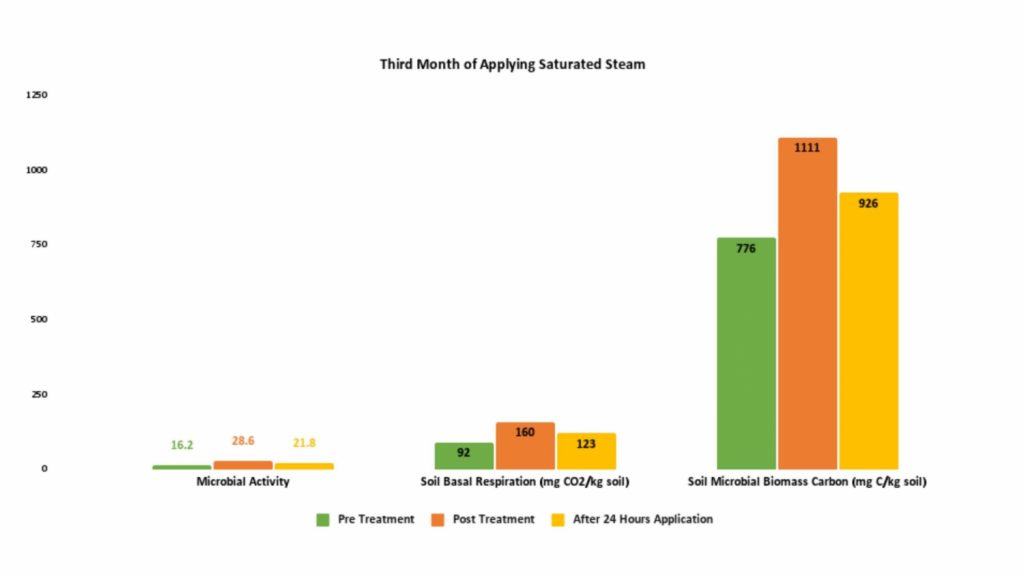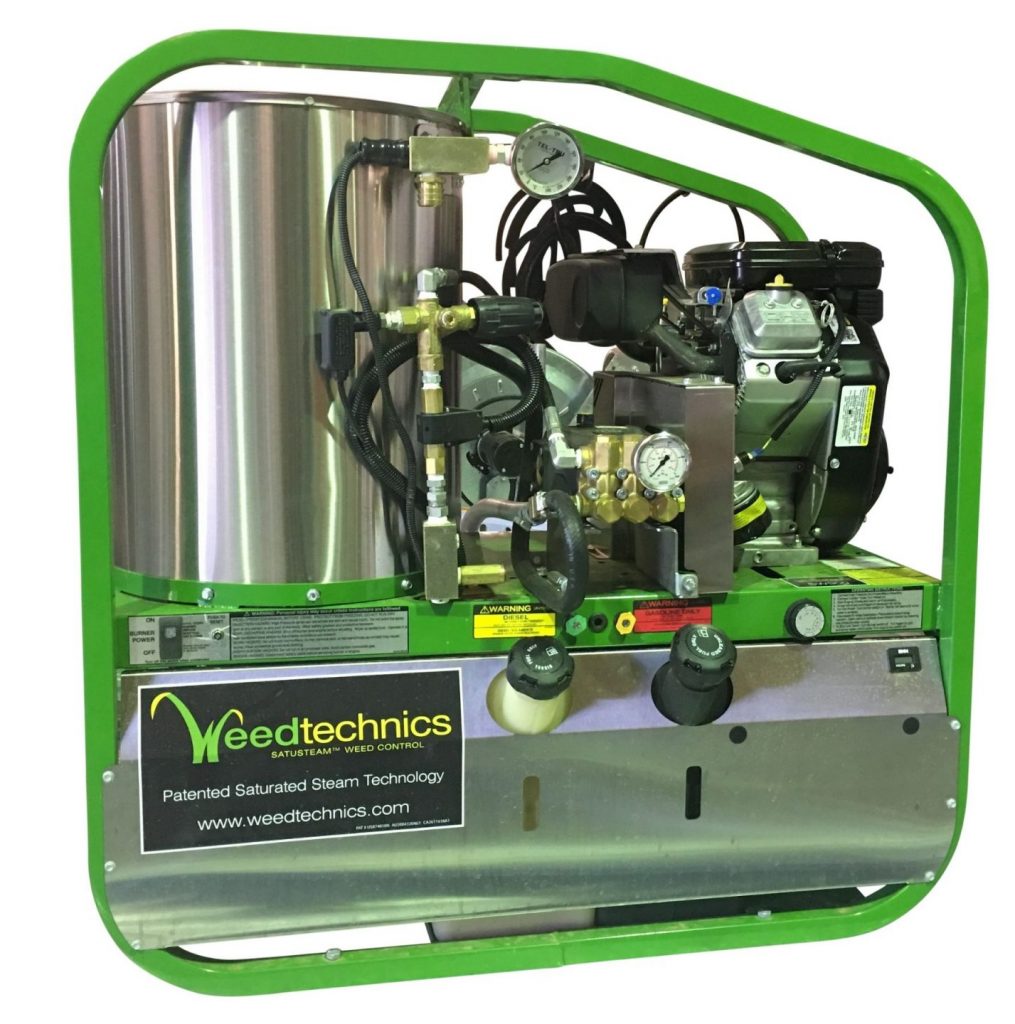Effect of steam weeding- Satusteam ™ On Soil Microbial Activity
Genuine concern for the long-term impacts of herbicides has been rising and along with it the trend for sustainable alternatives to chemical herbicides. This concern led the way for a student to conduct a case study entitled, “Permaculture Field Research: Steam Weeder Experiment.” This case study, featuring SatusteamTM, investigated the effects of hot wet thermal methods in weed control.
This article will discuss the case study in detail – its hypothesis, methodology, results garnered, and the conclusions drawn. At the end of this article, we will see how saturated steam and boiling water improves the overall soil quality and soil microbiota.
Goals and Objectives of the Case Study
Non-chemical weed control methods can be divided into two groups: hot dry and hot wet methods. The hot dry methods include Infrared radiation, open flame, and hot dry air. On the other hand, hot wet methods include steam, hot water, saturated steam, and boiling water.
In particular, saturated steam was focused in the study. That’s because hot wet methods enable more rapid transfer of lethal heat into the cell structure of weeds and grasses. Deeper penetration into the meristematic cells make saturated steam a viable alternative for chemical herbicides.
The researchers then sought to investigate the effect of high temperature steam in both weeds and grasses, as well as its effect on soil life. They hypothesised that saturated steam decreases the soil biota activity.
Methodology
Two quadrants of 1 sq. m. each were selected on a patch of Kikuyu grass (Pennisetum clandestinum) lawn. The researchers ensured that both patches receive the same amount of sunlight and shade, as well as the same plant intensity.
Saturated steam and boiling water were passed through these patches, and soil samples were collected prior to application, right after application, and 24 hours after application. The soil samples were then sent to a local laboratory for analysis. The equipment used was Weedtechnic’s SW900, a skid that releases Satusteam for weed control.
The research study used the Microbe Activity Wise Test to measure three variables, namely Microbial Activity, Soil Basal Respiration (SBR), and Soil Microbial Biomass Carbon (SMBC).
Results
During the first month, microbial activity right after application of Satusteam ™ was recorded to be 36.5. Then, 24 hours after application, microbial activity increased to 59.3. The same trend happened to soil basal respiration and soil microbial biomass carbon. These trends mean that Satusteam ™ increased the microbial activity in the soil.

As shown, the soil microbial activity increased after 24 hours of applying Satusteam™ during the first month.
In the second month, the same method was also adapted. However, the parameters were measured before, right after, and after 24 hours of applying Satusteam ™. The same trend was also observed. The application of Satusteam ™ leads to an increase in microbial activity, soil basal respiration, and soil biomass carbon.

As shown, the soil microbial activity still increased after 24 hours of applying Satusteam ™ during the second month.
During the third month, there were some inconsistencies with the results. Right after applying Satusteam ™, microbial activity, soil basal respiration, and soil microbial biomass carbon increased. However, after 24 hours, all the parameters decreased. This might be due to the sampling technique and the environmental conditions during the time of the experiment.

During the third month the microbial activity increased right after the application of Satusteam ™, but after 24 hours, it decreased.
Conclusions
In this study, the effect of Satusteam ™ on soil microbial activity, soil basal respiration, and soil microbial biomass carbon was investigated. During the first two months, it was observed that Satusteam ™ increased soil microbial activity across all parameters.
The increase in soil microbial activity can be attributed to the fact that Satusteam ™ kills weeds by exploding their cells. The remnants of the weeds are not removed and it wilts in the soil, increasing the organic matter present in the soil. Microorganisms can consume these nutrients, and thus, enrich the soil quality.
Overall, the researchers of the study confirmed that Satusteam ™ increases soil microbial activity after the application of saturated steam and boiling water.
Jeremy Winer has 30 years of practical experience in implementing integrated holistic approach to organic weed management across urban landscapes, recreational parklands and wetlands. He currently runs Weedtechnics specialising in providing chemical reduction and non-toxic weed control programs to municipalities across Australia. He has developed, patented, manufactured, and commercialised the Steamwand method of creating saturated steam for vegetation control.
Labels
- The Top Hidden Costs of Chemical Weed Control or Toxic Weed control
- How to kill Kikuyu grass?
- Harnessing the Power of Steam Weeding: A Sustainable Approach to Vegetation Management
- Did You Know Steam Weeding Can Actually Control Your Weed Seed Bank?
- Do Organic Herbicides Work?
- A Gardener’s Guide to Eco-Friendly Alternatives
- Ditch the Chemicals, Embrace Saturated Steam Weeding: A Safe and Effective Solution for Weed Control






